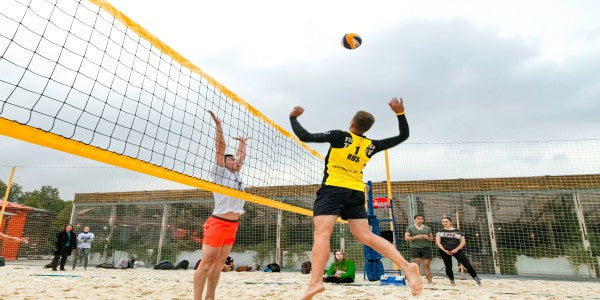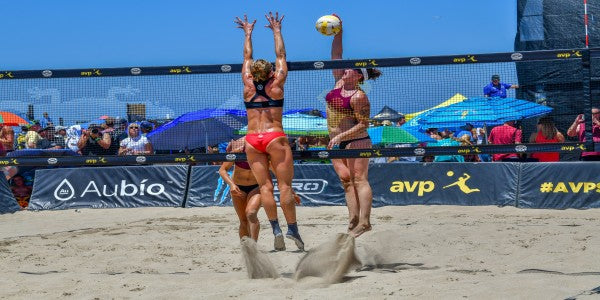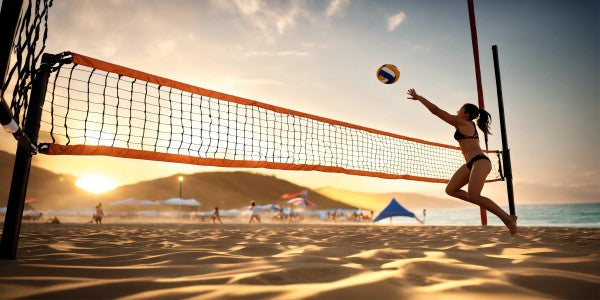How to Choose the Right Size Batting Tee?
Hitting a baseball consistently is one of the most difficult things to do in sports. Practicing the art of hitting requires great hand-eye coordination. Part of practicing hitting is using a very simple tool known as the batting tee.
What is a batting tee and how does it help improve hitting baseballs?
A basic batting tee has three parts: a base, stem, and ball holder. The base usually resembles home plate. The stem is an adjustable shaft that runs from the base to the ball holder, which holds the ball for the batter to hit. Note that other types of batting tees will be discussed.
Players use a batting tee to concentrate entirely on their swing mechanics, instead of worrying about tracking a ball and timing a pitcher. The idea is that the repetition of hitting balls squarely off a tee will reinforce muscle memory.
Another benefit of using a batting tee is it can be used on the side, allowing players to put in additional work necessary to achieve a consistently good swing. Using a new bat also requires some getting used to, so hitting balls off a batting tee enables players to consistently find the sweet spot and get used to the feel of the bat.
Types of batting tees
Don’t rush when purchasing a batting tee. Finding the right one for you is critical for maximizing results upon its use. The basic types of batting tees are classic, hybrid, and training.
Classic tees are the ones most people think of when describing a batting tee with base, shaft, and ball holder. They are battle-tested, effective, and good for various skill levels.
Hybrid tees hold the ball from the top and are best used with hitters who have an inconsistent swing, hitting the shaft on a standard tee.
Training tees have the same structure as classic tees except that the ball is connected. This enables a large number of repetitions without having to retrieve the ball after every swing.
Common problems with batting tees
A batting tee gets used hard and if the player’s swing is inconsistent, takes substantial abuse. Many ball holders are made of cheap plastic or low-quality rubber material. This can result in cracks or tears in the ball holders or the ball holder completely falling apart.
Some ball holders are too hard and can not only interfere with the swing but also cause knicks to the bat. If the hitter feels the resistance of a ball holder through the swing, it may cause bad swing habits.
At the other end of the spectrum is a ball holder that is too flimsy to hold the ball. This results in more than an annoyance. It interferes with timing and ultimately results in a useless attempt at finding rhythm in the swing.
Some ball holders are too wide and half the ball sinks into it. The proper way to hit a ball off a batting tee is to strike the very top of the ball holder while the ball shoots off the sweet spot of the bat. A ball that is devoured by the ball holder provides very little use and interferes with the swing.
Many players like to take their batting tee from their home to the field. Therefore it’s important to be sure the tee can be assembled and disassembled promptly. Sometimes the base of the batting tee is too bulky to transport. This is particularly a problem for younger players.
Finally, some batting tees are simply not durable enough to handle heavy use that comes with daily repetitions. Look for tees that are made of high-quality rubber, adjustable height, shafts made of steel, and sturdy connection to the base.
Hard plastics can chip away wood bats. Tees that use rubber or even bristles to hold the ball are much better for overall durability and aren’t harsh on a wood bat. A rubber top is a great option, allowing for a smooth swing path for any hitter.
Be sure the batting tee is adjustable and know how to adjust it
Most batting tees have an adjustable shaft. This is critical because not all pitches in a game will be the same height, and hitters must be able to make a good swing path through the entire strike zone to become good hitters.
Just because batting tees are adjustable doesn’t mean we know what height to adjust it to. Sometimes coaches adjust so high that the ball isn’t even in the strike zone and the batter must swing upward unnaturally to have a chance to hit the ball. The other extreme is putting the tee down so low that it promotes an extremely downward swing plane, which is also unnatural.
Coaches need to be sure to adjust a batting tee that promotes the best swing. This isn’t the same for each hitter. Typically the ball should be positioned just above the belt for beginning players. A good stance, weight shift, and swing path through a ball at this level is ideal for teaching sound swing fundamentals. Adjustments can be made as needed to help hitters who have a hard time hitting a higher or lower strike.
Different tee heights
Be sure to pick the proper tee height for the age and skill level of the player who will be using it.
Mini batting tees are in the range of 18 to 24 inches. These are best suited for children between the ages of 3 and 6 who are just learning the basics of the game. The height should be ideal for introductory hitting techniques taught at this age.
Youth batting tees are in the range of 24 to 32 inches. These are ideal for kids between the ages of 7 and 12. Kids in this age range are beginning to develop their skills, but still need work with a batting tee to improve consistency and confidence with their swings.
Standard batting tees are in the range of 32 to 38 inches. These are ideal for kids at the middle and high school level (ages 13 to 18). With kids at this age group growing at more substantial rates, the variability in height is ideal. In addition, these tees are good for adults who are new to baseball or have been away from the game for years and want to regain muscle memory from a solid swing or reinforce fundamentals.
Professional batting tees are in the range of 38 inches and above. These are used for advanced players or taller adults who need the extra height. Using a tee that is too low will promote a more crouched stance and choppy swing to reach the lower ball. A higher tee will replicate the height of a baseball or softball. Professional players use batting tees during rehabilitation, in spring training, and between innings to keep loose and to work on fundamentals during slumps.
As simple as they are, batting tees are great tools to use for players of all ages and skill levels, whether first picking up a bat at age three to a professional veteran of 15 years. Finding the right batting tee is critical for obtaining the best results during practice sessions.






